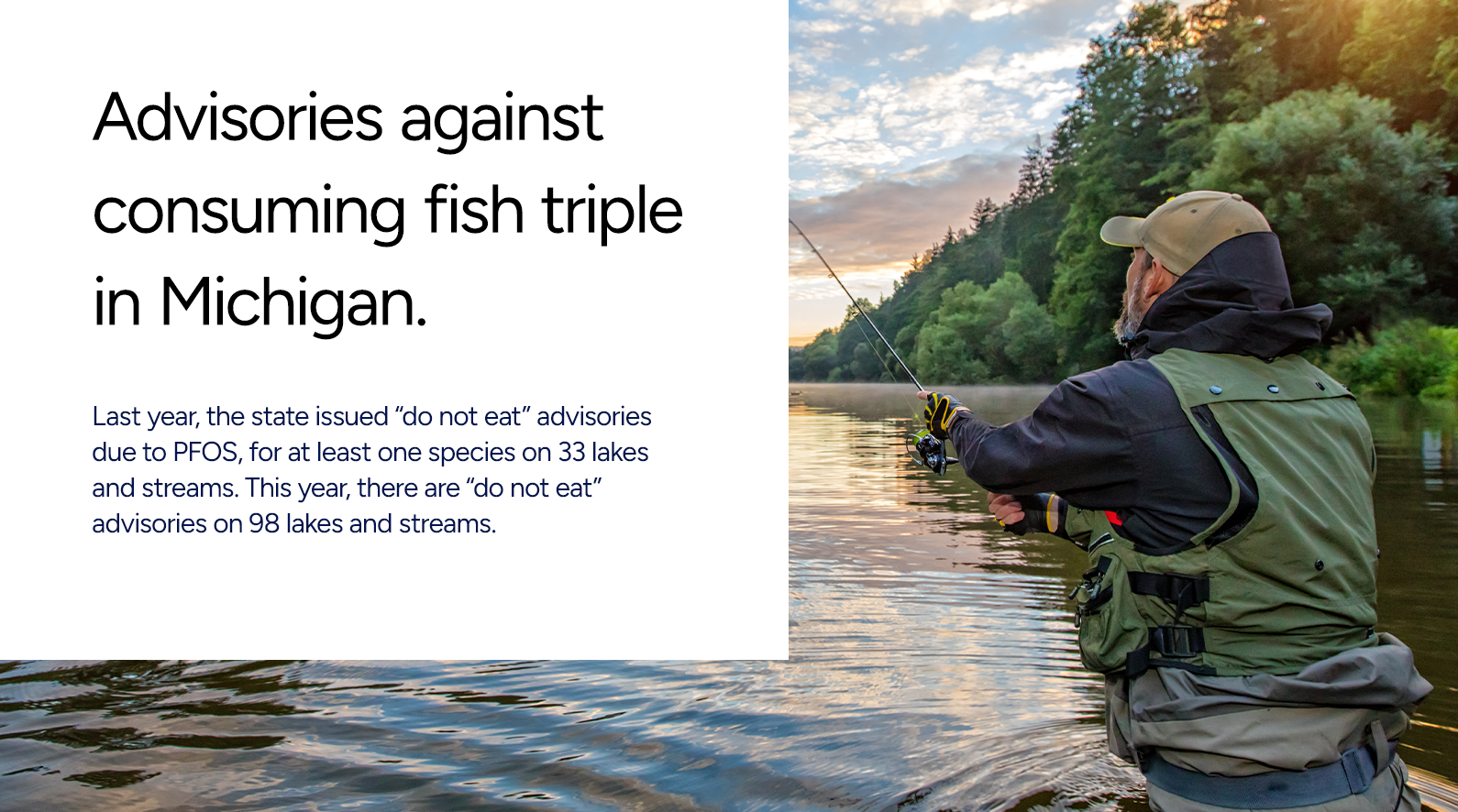
A science review has prompted state officials to sharply increase the number and scope of fish consumption advisories related to perfluorooctane sulfonate (PFOS), a chemical that is part of the dangerous PFAS family of “forever chemicals.” The advisories encourage Michiganders to limit, or in some cases stop, eating some species of fish, depending on the river or lake affected.
Last year, the state issued “do not eat” advisories due to PFOS, for at least one species on 33 lakes and streams. This year, there are “do not eat” advisories on 98 lakes and streams.
The updated guidelines lower Michigan’s “do not eat” level for PFOS from 300 parts per billion (ppb) to 50 ppb, based on growing evidence about the health risks associated with PFAS.
The Michigan Department of Health and Human Services (MDHHS) made the announcement in June while releasing its annual Eat Safe Fish guide.

A scientific review of PFOS provided MDHHS more information about the toxicity of PFOS and its impact on human health, the department said. “PFOS has been found to be a greater threat to human health than previously thought and has resulted in changes to this year’s Eat Safe Fish Guides,” the department said. “Additional guidelines are included due to PFOS for both entire waterbodies and specific fish species, including an increase in the number of Do Not Eat guidelines.”
The state last reviewed PFAS science in 2014 to determine fish consumption advisories. The recent review resulted in a six-fold reduction in the fish contaminant levels at which “do not eat” is recommended.
“This news shows the urgency of toughening our laws and policies to stop the next chemical disaster. It’s important not to repeat the mistakes that let PFAS chemicals into our food and drinking water in the first place,” said Liz Kirkwood, Flow Water Advocates Executive Director.
“This new advisory is a major win for public health and a long-overdue acknowledgment of the science on PFAS,” said Tony Spaniola, co-chair of the citizen coalition, the Great Lakes PFAS Action Network. “These new guidelines will help protect people across Michigan – especially in frontline communities that rely on fish as a food source. I urge MDHHS and local health departments to get the word out to impacted communities without delay.”
Epidemiological evidence suggests links between increases in exposure to PFOS and:
- Increases in cholesterol levels;
- Lower antibody response to some vaccines;
- Changes in liver enzymes;
- Pregnancy-induced hypertension and preeclampsia;
- Small decreases in birth weight.
PFAS are human-made chemicals used in industry and consumer products worldwide since the 1940s. PFOS has been used in fire-fighting foams and fabric protectors and stain repellents, such as Scotchguard. PFAS are found globally in the blood of people and animals and in a variety of food products and in the environment. A U.S. EPA study found PFOS in every fish analyzed. Because they do not break down in the environment, they are known as “forever chemicals.”
